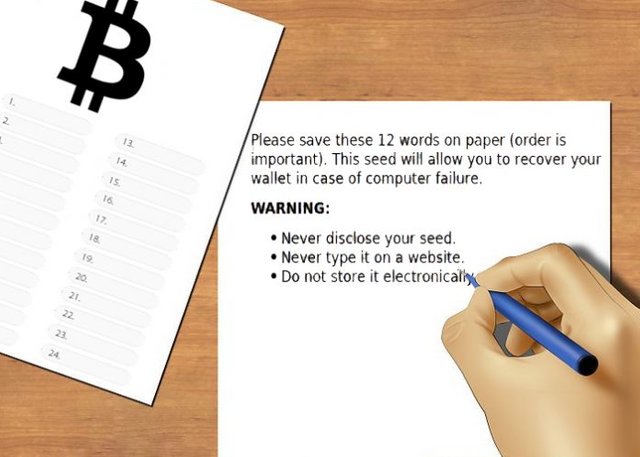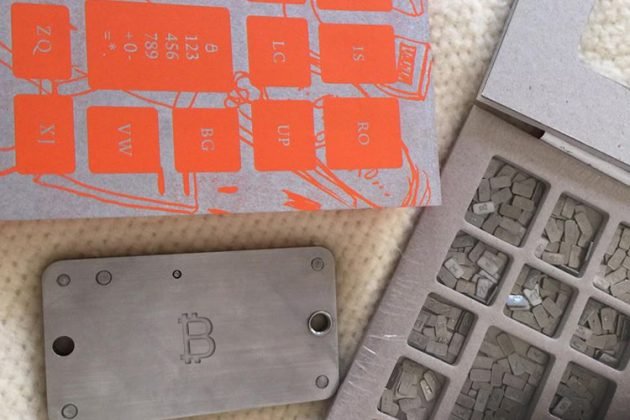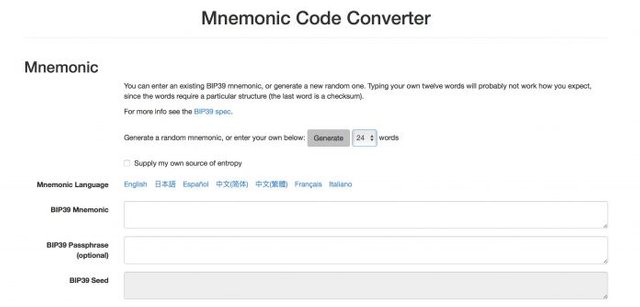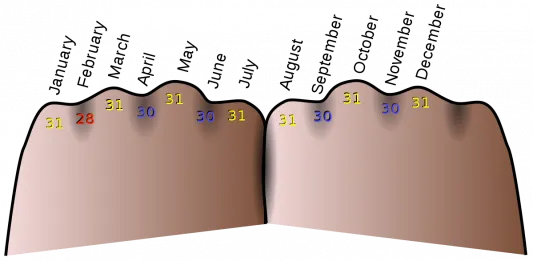As more new people adopt cryptocurrencies, lots of newbies are creating mnemonic recovery phrases in order to make sure their digital assets are kept secure. It is very important to understand how your private keys are stored just in case there is an issue with your wallet client or device that holds your funds. Not all mnemonic phrases are the same, and restoration can be difficult for certain types of derivation paths. Today we are going to discuss what a mnemonic seed is and how they work.
Understanding the Cryptocurrency Seed Phrase and the Use of Memoria Technica
A mnemonic seed is used for a lot of wallets, and users traditionally write down either a 12, 18 or 24-word phrase that is tied to their private keys. The use of mnemonics, or ‘memoria technica,’ is derived from the era of the ancient Greeks when Aristotle and Plato philosophized about certain types of logic.
Bitcoin and Mnemonics: The Art of the Secret Phrase
This is a depiction of the Knuckle mnemonic which represents the number of days in each month of the Gregorian Calendar.
Basically, a mnemonic is a way to reproduce something hard to remember, like a series of data, and by associating the data with things like random words, so humans can remember the original data by using the mnemonic as a deciphering tool. With private keys tied to cryptocurrencies, the list of words you write down as a backup is basically enough information to recover your funds to another wallet if something unfortunate were to happen. A trustworthy wallet’s software will tie the private key to a mnemonic recovery phrase in a secure and randomized fashion.
Bitcoin and Mnemonics: The Art of the Secret Phrase
Example twelve word seed phrase.
Not All BIP 39 Mnemonic Phrase Supporting Wallets Restore in the Same Fashion
Cryptocurrency wallets that use a mnemonic seeds support an implementation called BIP 39 which allows private keys to be tethered to a group of easy to remember words. So whenever you write down a seed to a new wallet the set of words is your private key and anyone who learns the mnemonic phrase has access to your funds. So always be very careful with your mnemonic recovery phrase. The longer the mnemonic, the more secure your assets will be as a 24-word seed is harder to crack compared to one that is just twelve. The English wordlist for BIP 39 contains 2048 words, so in order to crack a 12-word phrase it would require figuring out 2048^12 = 2^132 possible combinations under a shield of 128-bit security. The longer the phrase, the number of possible combinations becomes exponentially harder to crack.
Bitcoin and Mnemonics: The Art of the Secret Phrase
Not all BIP 39 implementations are the same as you may find seeds from wallets like Blockchain, Mycelium, Copay, Bitpay, Jaxx, Ledger, and Keepkey mnemonic phrases are not compatible with clients like Multibit, and BRD (Bread) seeds. This is because wallets like BRD use a different derivation path than some of the others. The different derivation paths that most wallets use include BIP 32, 44, 49, 84, and 141. So in order to find out whether or not your wallet seed is compatible with another wallet you need to figure out the wallet’s seed implementation. Researching other wallets that can restore your funds because they use the same restoration method is a really good thing to know just in case your Ledger Nano broke, or your mobile phone was stolen. It means you don’t necessarily have to use the same wallet. For instance, if your Ledger broke you wouldn’t have to wait to order a new Trezor as you could restore the funds into another wallet if you desired.
Ian Coleman’s Mnemonic Code Converter
If you are having issues with importing your key to another wallet you can use Ian Colman’s nifty tool called the Mnemonic Code Converter. The cool thing about the converter is that it can be used offline so people can check their mnemonic seed or addresses that contain funds. The tool has all the BIP 39 compatible derivation paths, and you can simply type in your mnemonic and it will produce all the tethered addresses including private keys, the extended private key, and more including scannable QR codes. However be very careful using a scanner as some malicious scanners can record the seed.
Bitcoin and Mnemonics: The Art of the Secret Phrase
Make sure you use this tool offline and on a clean computer. Do not use
Some Wallets Offer You the Ability to Look at Your Seed Phrase at Any Time After Creation or Allow you to Initiate a Restore Dry Run
Now, most newer wallets allow you to double check what you wrote down right after you finished recording the seed phrase on paper, but not all wallets do this so it’s sometimes good to double check your seed. Some wallets keep the seed available within the application so you can view it at any time if you lost your piece of paper or you think you wrote down the words incorrectly. Other wallets like Trezor allow users to perform a restoration ‘dry run’ test of a seed tethered to a device. This means if you bought a Trezor back in the early days and you’re not sure you wrote the seed down correctly, you can double check it without fully restoring as long as you have up to date firmware.
Bitcoin and Mnemonics: The Art of the Secret Phrase
Understanding and Guarding Your Seed Will Ensure Better Security and Safety from Unfortunate Issues
A mnemonic recovery phrase needs to be well-guarded and kept away from prying eyes because if anyone remembers it they can steal your funds. The most common way people store them is on a piece of paper but remember that paper can burn, and deteriorate over time so some people take extra precautions. You can laminate the paper seed phrase adding more life to how long it will last, some people etch their seeds in steel, or use products like the Cryptosteel.
Bitcoin and Mnemonics: The Art of the Secret Phrase
Some people use more durable methods than paper such as steel.
Other people have the guts to memorize their seed as remembering 12-24 words is not so difficult for people with photographic memory. Some people hide the mnemonic in a book or a journal using the words from inside the book as a replacement for the seed words and write down the page or highlight the words in a secret fashion.
The more people understand how private keys work and how a mnemonic is tied to them then it will be much easier for people to restore funds in a less worrisome fashion. It is also good practice to make sure you wrote all the words down correctly and to also check if a wallet software’s recovery phrase is compatible with the current standards.
What do you think about the method of recovering keys with a mnemonic phrase? Let us know what you think about this subject in the comment section below


Hi! I am a robot. I just upvoted you! I found similar content that readers might be interested in:
https://news.bitcoin.com/bitcoin-and-mnemonics-the-art-of-the-secret-phrase/
Downvoting a post can decrease pending rewards and make it less visible. Common reasons:
Submit